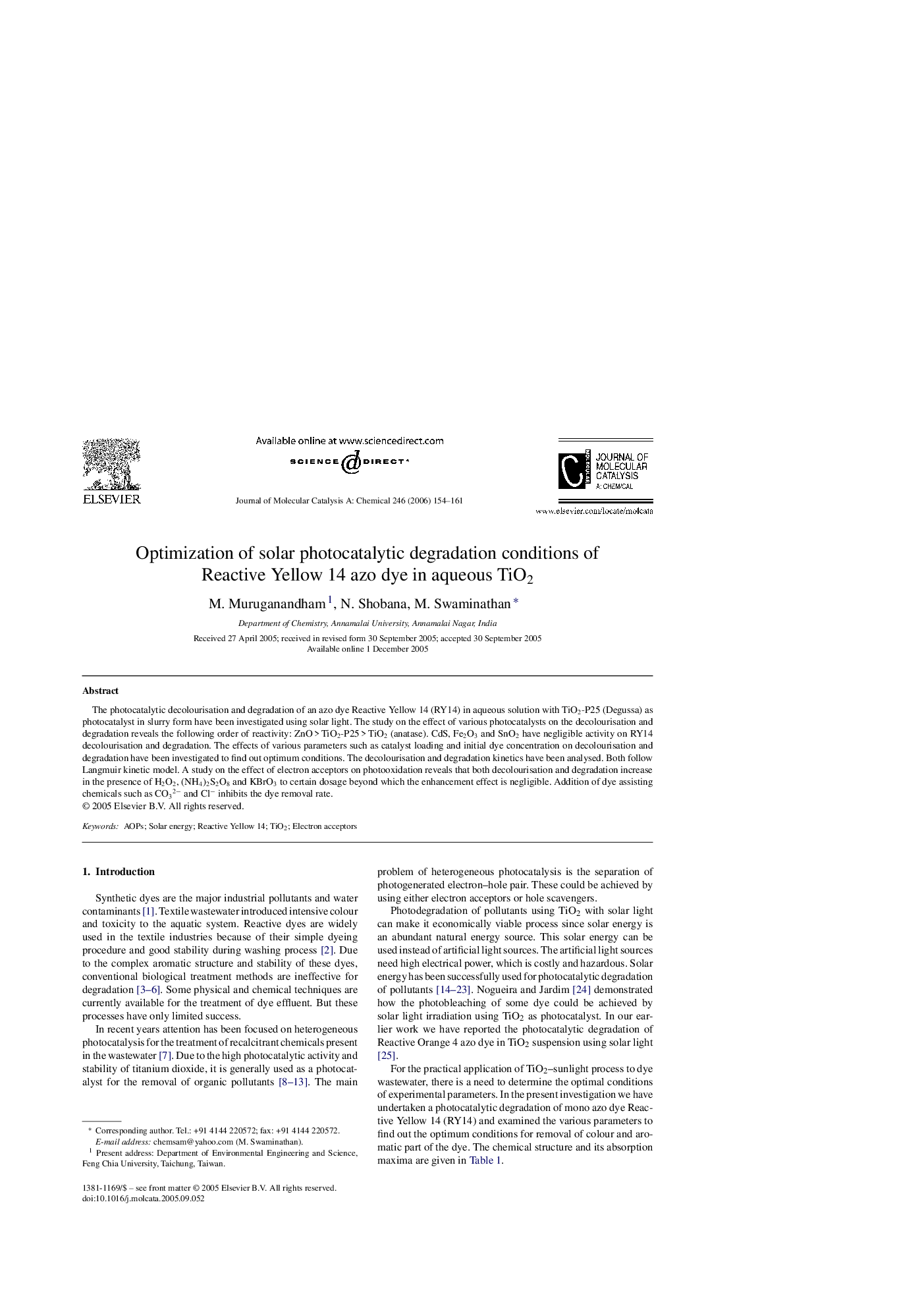| Article ID | Journal | Published Year | Pages | File Type |
|---|---|---|---|---|
| 69062 | Journal of Molecular Catalysis A: Chemical | 2006 | 8 Pages |
The photocatalytic decolourisation and degradation of an azo dye Reactive Yellow 14 (RY14) in aqueous solution with TiO2-P25 (Degussa) as photocatalyst in slurry form have been investigated using solar light. The study on the effect of various photocatalysts on the decolourisation and degradation reveals the following order of reactivity: ZnO > TiO2-P25 > TiO2 (anatase). CdS, Fe2O3 and SnO2 have negligible activity on RY14 decolourisation and degradation. The effects of various parameters such as catalyst loading and initial dye concentration on decolourisation and degradation have been investigated to find out optimum conditions. The decolourisation and degradation kinetics have been analysed. Both follow Langmuir kinetic model. A study on the effect of electron acceptors on photooxidation reveals that both decolourisation and degradation increase in the presence of H2O2, (NH4)2S2O8 and KBrO3 to certain dosage beyond which the enhancement effect is negligible. Addition of dye assisting chemicals such as CO32− and Cl− inhibits the dye removal rate.
Graphical abstractThe photocatalytic degradation of Reactive Yellow 14 azo dye has been carried out using solar light. The effects of various experimental parameters on decolourisation and degradation have been investigated to find out optimum conditions. The decolourisation and degradation kinetics follow the Langmuir kinetic model. The effect of electron acceptors and dye assisting chemicals on photooxidation was investigated and a plausible mechanism was proposed. Figure optionsDownload full-size imageDownload as PowerPoint slide
